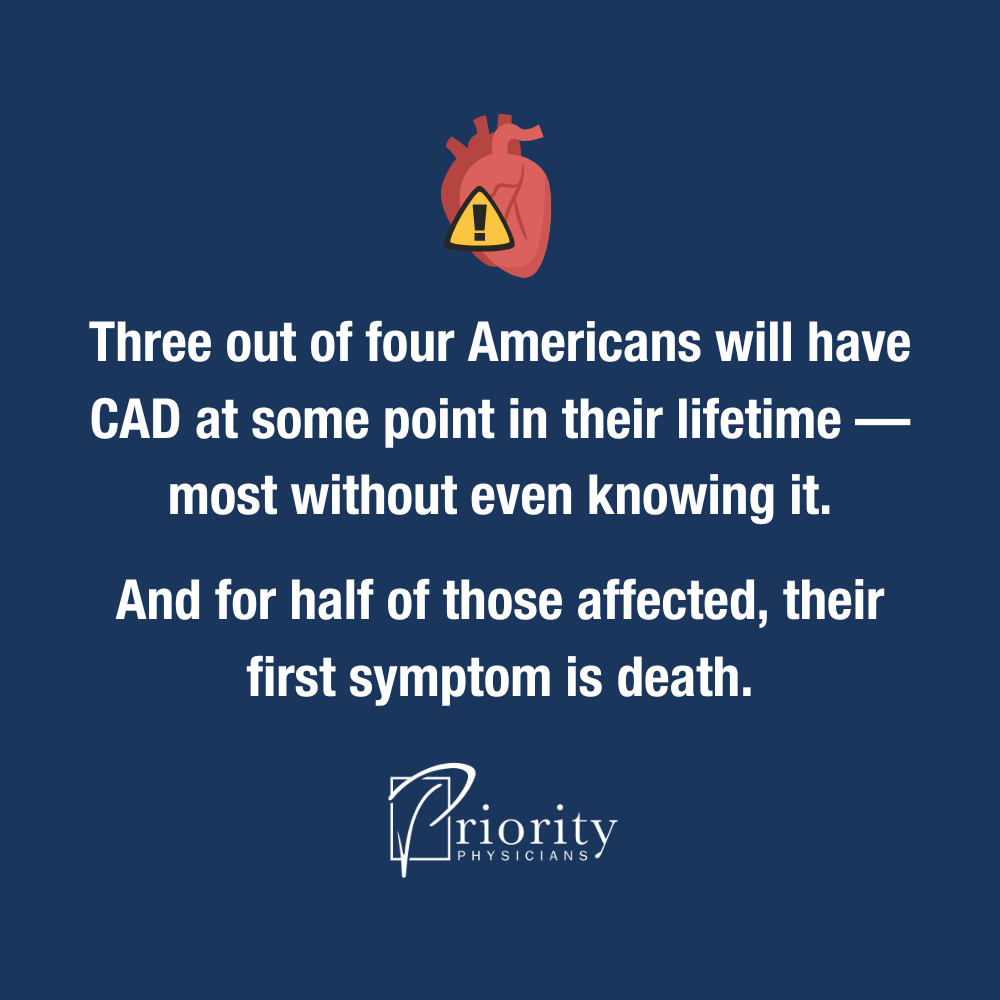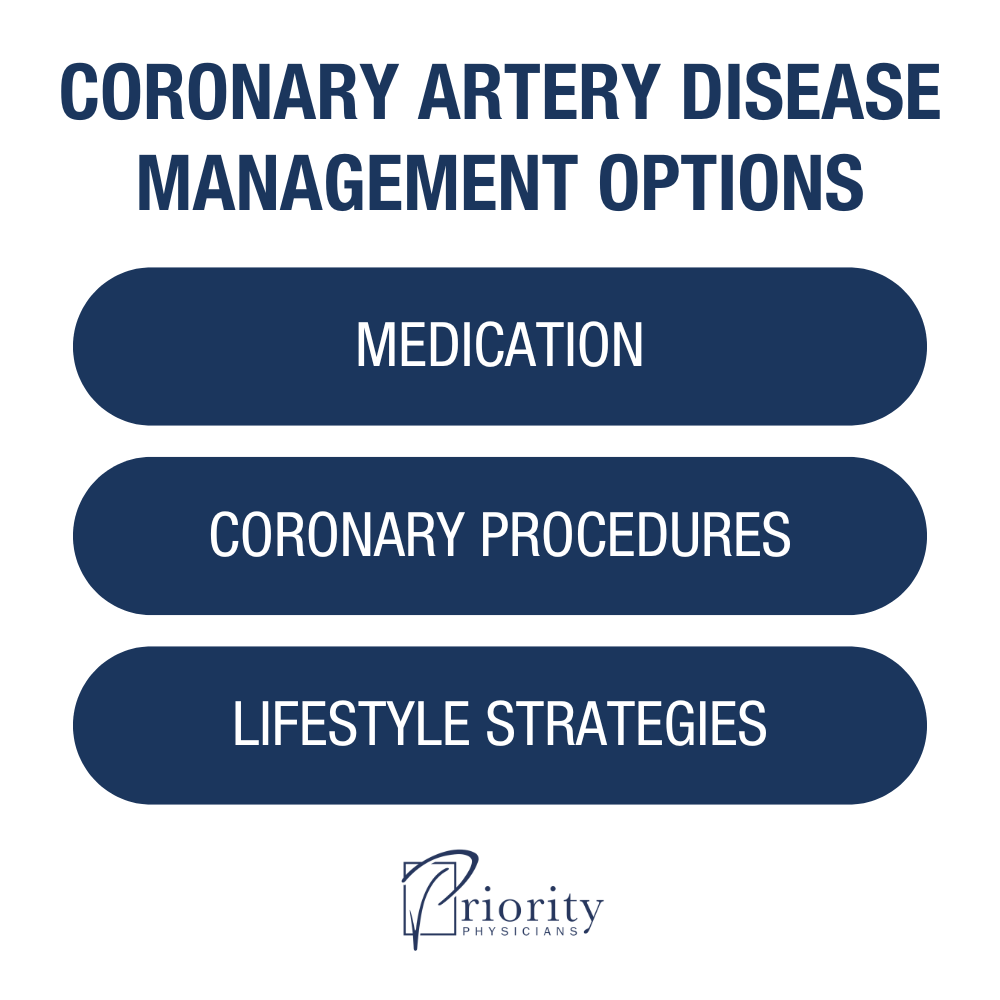We’ve all known someone — a friend, family member, or coworker — who died unexpectedly from a heart attack. Maybe the death was especially surprising because the affected person had no idea their heart was in trouble.
Sudden death from a heart attack is often caused by a hidden case of coronary heart disease (CAD). Three out of four Americans will have CAD at some point in their lifetime — most without even knowing it. And for half of those affected, their first symptom is death.
Alarming? Definitely. But good CAD management is possible, even before the disease sneaks up on you.

Good CAD Management Starts Early
Many of my patients have seen a parent or sibling succumb to coronary artery disease. And it’s true that, if there’s a family history of heart issues, your genes may predispose you to CAD. Of course, CAD can also be a byproduct of an unhealthy lifestyle.
The most unfortunate part of plaque from CAD is that it can’t improve on its own. No natural aid — exercise, sleep, or healthy eating — can reverse it. So, it’s essential to take proactive measures against coronary artery disease throughout your life, including regular conversations with your physician.
Treatment
If you’re diagnosed with CAD, there’s hopeful news, too: You can work with your doctor on careful CAD management to actively prevent the disease from getting worse.
Here at Priority Physicians, we consider several CAD management options:
Medication
- Statins are the standard first-line therapy for anyone diagnosed with CAD. They’re used to:
- Stabilize plaque
- Encourage plaque regression
- Lower cholesterol
- Decrease inflammation in blood vessel walls
- PCSK9 inhibitors (like Repatha and Praluent) are a revolutionary new class of injectable drugs that lower cholesterol. They reduce risk even more effectively than statins, although they’re more expensive.
- As part of CAD management, we frequently also recommend that patients take a specific kind of blood pressure medication. Also known as beta blockers, these meds slow the heart rate and reduce strain on the blood vessels.
Coronary Procedures
- For patients with coronary heart disease, heart catheterization can help determine how well the heart is working. The surgeon places a stent in a narrowed area of the blood vessels (known as a stenosis) to expand the area and improve blood flow. A coronary stent provides a measure of relief for the patient’s heart and clears the way for active CAD management.
- Occasionally, a patient will undergo coronary artery bypass grafting (CABG), also known as bypass surgery. The heart surgeon harvests blood vessels from other areas of the body, using them to bypass stenosis and create new blood vessels around the heart.
These procedures give both the patient and doctor more time to implement CAD management and stop the disease’s progress. However, even after these procedures, patients can develop fresh plaque within new blood vessels, so they must keep following prescribed medications and a heart-healthy lifestyle.
5 Lifestyle Strategies
Earlier in this blog, I said that no amount of lifestyle change can reverse plaque buildup. But when you choose a healthy lifestyle and diet, your medications become even more effective and you reduce your chances of a dangerous cardiac event.
We work with you to keep these five critical elements under control:
- Blood pressure: Follow your doctor’s advice on the right medications to protect blood vessels. Look for ways to reduce daily stress.
- Cholesterol: Stick to nutritious, low-fat, low-salt meals.
- Blood sugar: Watch out for high blood glucose that can damage blood vessels and the heart’s nerves.
- Smoking: It increases plaque in your arteries. Stop smoking, or don’t start.
- Weight: Try to get 150 minutes of cardiovascular exercise every week, as recommended by the U.S. Department of Health. Include muscle-resistance exercises in your routine as well.

Prevention Is the Best Cure
Your heart health is pivotal to your well-being. So, regardless of your age, personal health, or family history, be heart-conscious.
Developing a great relationship with your Priority Physician is the best way to get started. We take the time to get to know you well, because the better we know you, the better we can advise and treat you.
(And like any good friend, we’ll point out any blind spots you may have or concerns you’re ignoring. Hint: Some people resist taking statins — we can get you over that hurdle!)
We’ll help you take charge of your heart health. Reach out.

